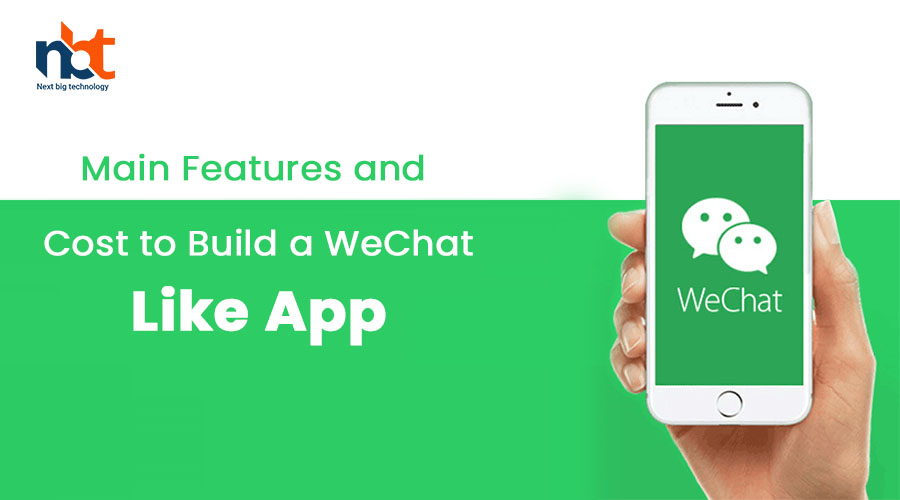Introduction:
WeChat has revolutionized the way people communicate, connect, and engage in China and beyond. With its wide range of features and capabilities, it has become a multi-purpose platform that combines messaging, social networking, e-commerce, and more. If you’re inspired by the success of WeChat and considering building a similar app, it’s important to understand the main features required and the associated costs to create a robust and versatile messaging and social platform. In this comprehensive guide, we will explore the main features and cost factors to consider when building a WeChat-like app. Let’s dive in!
I. Main Features of a WeChat-Like App:
- User Registration and Profiles:
- Allow users to create accounts, set up profiles, and manage personal information, including profile pictures, statuses, and contact details.
- Messaging and Calling:
- Provide a messaging feature that enables users to send text messages, voice messages, make voice calls, and video calls to individuals or groups.
- Moments and Social Feed:
- Implement a social feed where users can post updates, photos, videos, and share content with their friends or public audiences.
- Official Accounts:
- Enable businesses, organizations, or public figures to create official accounts to share updates, news, promotions, and interact with followers.
- Friend Circles and Groups:
- Allow users to create or join friend circles or groups based on shared interests, enabling discussions, event planning, and collaboration.
- Moments Ads and Sponsored Content:
- Provide advertising options for businesses to display sponsored content or targeted ads within users’ Moments feeds.
- Mini Programs:
- Integrate mini programs, which are lightweight apps within the main app, that offer various functionalities, such as e-commerce, games, utilities, or entertainment.
- Payment and Financial Services:
- Integrate a payment system, allowing users to send and receive money, make mobile payments, and access financial services, such as investments or loans.
- Location Sharing and Check-Ins:
- Enable users to share their location, check-in to places, and discover nearby friends or businesses.
- Official Accounts Subscription:
- Offer users the option to subscribe to official accounts of their choice, receiving updates, news, or exclusive content directly in their subscription folder.
- Stickers and Emojis:
- Provide a wide range of stickers, emojis, and animated GIFs to enhance user expressions and conversations.
- Moments Likes and Comments:
- Allow users to like and comment on moments shared by their friends or public accounts, fostering engagement and interaction.
- Translation Services:
- Integrate translation features that enable users to translate messages or content in real-time, supporting multilingual communication.
- QR Code Scanning:
- Enable users to scan QR codes for various purposes, such as adding friends, making payments, or accessing specific content.
II. Cost Factors to Consider:
- Platform Selection:
- Determine whether you want to build the app for iOS, Android, or both platforms. The choice will impact development costs and timeframes.
- App Design and User Interface:
- Investing in intuitive and user-friendly app design is crucial to providing a seamless messaging and social experience. Costs may vary based on design complexity and customization requirements.
- Development Team:
- Hiring experienced developers, designers, and quality assurance specialists is essential for building a robust and feature-rich messaging and social app. The team size will impact costs.
- App Development Approach:
- Decide between native or cross-platform development. Native apps offer better performance but require separate development for iOS and Android. Cross-platform solutions can reduce development time and costs.
- Backend Infrastructure:
- Building a scalable backend infrastructure to handle user management, messaging, content sharing, payments, and other features is critical. Costs will vary based on infrastructure complexity and hosting requirements.
- Third-Party Integrations:
- Consider the need for integrating third-party services, such as payment gateways, location-based services, or translation APIs, which may incur additional costs.
- Testing and Quality Assurance:
- Allocate resources and budget for thorough testing to ensure the app’s functionality, performance, and security.
- Compliance and Legal Considerations:
- Consider the costs associated with complying with local regulations, data privacy laws, and intellectual property rights.
Conclusion:
Building a WeChat-like app requires careful consideration of the main features and cost factors involved in creating a robust messaging and social platform. Costs will vary depending on factors such as platform selection, app design, development approach, team size, and desired features and functionality. Prioritize the main features based on your target audience and business goals to control costs while ensuring the app’s reliability and user satisfaction. By considering the main features and cost factors discussed in this guide, you can lay a solid foundation for developing a successful WeChat-like app that offers a versatile and engaging messaging and social experience to users worldwide.


















